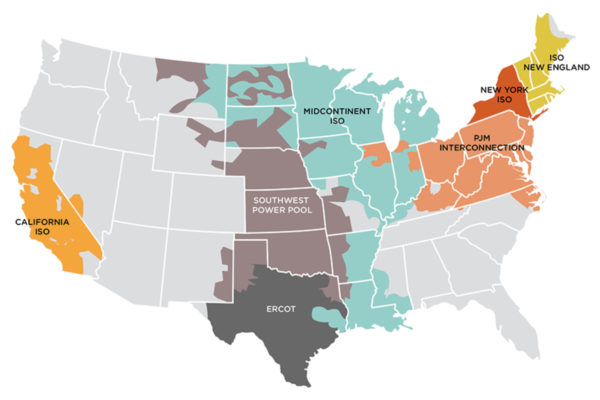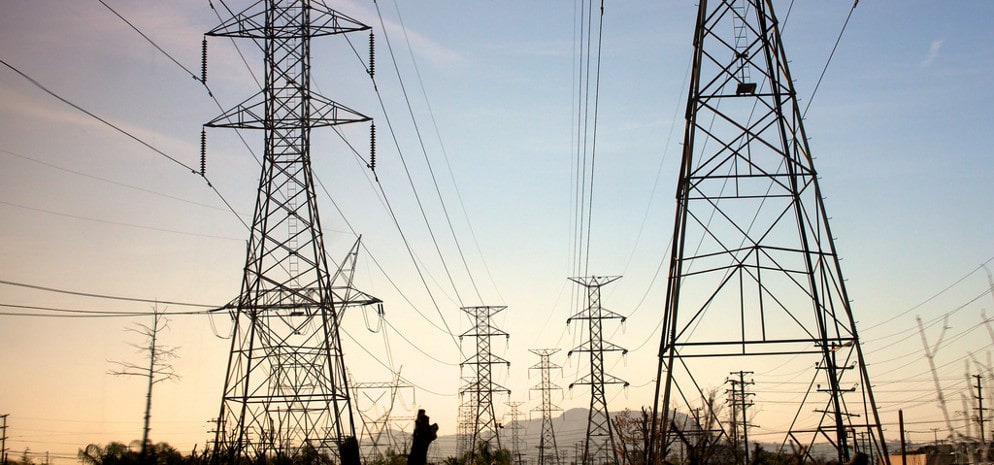“What’s so striking” about the amount of renewable generating capacity added across US grid regions last year “is that ERCOT interconnected about 6,000 MW of renewables, while PJM interconnected only about 2,000 MW,” even though PJM is more than twice as large as ERCOT, Johannes Pfeifenberger, a Principal with The Brattle Group said in a presentation.
ERCOT’s process “is so much faster than some of the other processes,” Pfeifenberger said, because ERCOT “pretty much” follows a process known in the UK as “connect and manage,” as opposed to the “invest and connect” approach followed by most US grid operators. The grid operators are shown in the nearby map from Sustainable FERC Project.

The UK generator interconnection process only considers local upgrades needed to make the injection point “robust enough,” he said, and any network constraints or congestion “are then dealt with through an operational management process like congestion management, curtailment, or network upgrades if planned on a regional basis.”
ERCOT manages network constraints through market dispatch, Pfeifenberger said, “which imposes high congestion and curtailment risks” on interconnecting generators, in part due to “ERCOT’s insufficiently proactive grid planning.”
He believes that generator interconnection that’s “more focused on the local needs will be more timely and cost-effective if combined with proactive regional transmission planning.”
To illustrate that point, Pfeifenberger gave two examples from the MISO and PJM grid regions. MISO has proposed a $10 billion portfolio of six transmission projects that would support interconnection of 53 GW of renewables, and reduce other costs by $37 to $68 billion. PJM identified $3.2 billion in upgrades that would support interconnection of 75 GW of offshore wind, or just $40/kW, which compares to a cost of $6.4 billion PJM previously identified for incremental upgrades for 15 GW of offshore wind.
By being proactive about regional transmission planning, Pfeifenberger said, “…you can really speed up the generator interconnection process quite tremendously.”
In a side note, the Mid-Atlantic and Northeast regions are “quite behind in terms of renewable demand versus project development,” he said. Both regions have a large gap between renewables projects at an advanced stage of development, and the renewables targets of the states in those regions, he said, citing a Lawrence Berkeley National Laboratory report.
This content is protected by copyright and may not be reused. If you want to cooperate with us and would like to reuse some of our content, please contact: editors@pv-magazine.com.








By submitting this form you agree to pv magazine using your data for the purposes of publishing your comment.
Your personal data will only be disclosed or otherwise transmitted to third parties for the purposes of spam filtering or if this is necessary for technical maintenance of the website. Any other transfer to third parties will not take place unless this is justified on the basis of applicable data protection regulations or if pv magazine is legally obliged to do so.
You may revoke this consent at any time with effect for the future, in which case your personal data will be deleted immediately. Otherwise, your data will be deleted if pv magazine has processed your request or the purpose of data storage is fulfilled.
Further information on data privacy can be found in our Data Protection Policy.